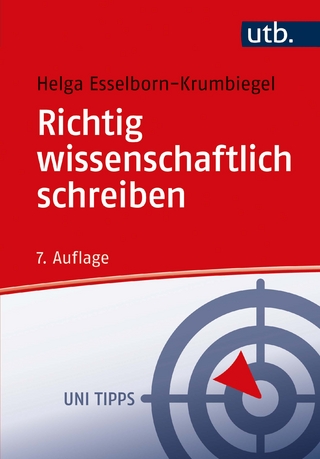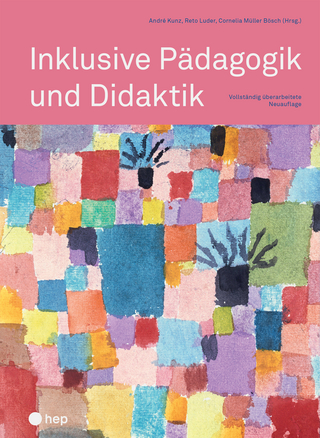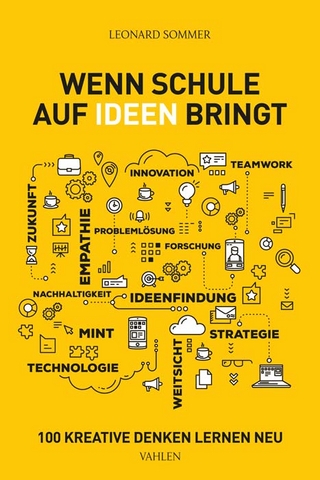
Secondary Science Teaching for English Learners
Rowman & Littlefield (Verlag)
978-1-4422-3126-9 (ISBN)
Secondary Science Teaching for English Learners: Developing Supportive and Responsive Learning Context for Sense-making and Language Development provides a resource for multiple audiences, including pre- and in-service secondary science teachers, science teacher educators, instructional coaches, curriculum specialists, and administrators, to learn about a research-based approach to teaching science that responds to the growing population of English learners in the United States.
The book offers clear definitions of pedagogical practices supported by classroom examples and a cohesive framework for teaching science in linguistically diverse classrooms. The Secondary Science Teaching with English Language and Literacy Acquisition (or SSTELLA) Framework addresses how learning science is enhanced through meaningful and relevant learning experiences that integrate discipline-specific literacy. In particular, four core science teaching practices are described: (1) contextualized science activity, (2) scientific sense-making through scientific and engineering practices, (3) scientific discourse, and (4) English language and disciplinary literacy development. These four core practices are supported by sound theory and research based on unscripted guidelines and flexible modifications of science lessons. Moreover, the four interrelated practices promote students’ use of core science ideas while reading, writing, talking, and doing science, thus reflecting principles from Next Generation Science Standards, Common Core State Standards for English Language Arts, and English language proficiency standards. Secondary Science Teaching provides readers with a historical and theoretical basis for integrating language, literacy, and science in multilingual science classrooms, and well as explicit models and guided support teachers in enacting effective teaching practices in the classroom, including comparative vignettes to distinguish between different types of classroom practice.
Edward G. Lyon received his Ph.D. from the University of California at Santa Cruz. He is currently an Assistant Professor of Science Education at California State University, Sonoma. Prior to getting his doctorate he taught high school science for several years. Trish Stoddart received her Ph.D. from the University of California at Berkeley. She is a Professor of Education at the University of California at Santa Cruz. Sara Tolbert is an Assistant Professor of Science Education at the University of Arizona. She received her Ph.D. from the University of California at Santa Cruz. Prior to receiving her doctorate, she was a middle school science teacher. Jorge Luis Solís is an Assistant Professor in the College of Education and Human Development at the University of Texas at San Antonio. He received his Ph.D. from the University of California at Berkeley.
Foreword
Acknowledgements
Introduction: Preparing the Next Generation of Secondary Science Teachers
Edward G. Lyon
PART I: FOUNDATIONS FOR LANGUAGE, LITERACY, AND SCIENCE INTEGRATION
Chapter 1: The New Vision for Secondary Science Education: Connecting Language and Literacy to Science Learning
Trish Stoddart
Chapter 2: Responsive Approaches to Science and Language Teaching for English Learners: Foundations of the SSTELLA Framework
Jorge Solís and George C. Bunch
PART II: SUPPORTIVE AND RESPONSIVE SCIENCE TEACHING PRACTICES FOR ENGLISH LEARNERS
Chapter 3: The SSTELLA Framework: A Synergistic and Reciprocal Relationship between Language and Science for Secondary Teaching
Sara Tolbert and Trish Stoddart
Chapter 4: Contextualizing Science Activity
Sara Tolbert
Chapter 5: Scientific Sense-Making through Scientific and Engineering Practices
Edward G. Lyon and Sara Tolbert
Chapter 6: Scientific Discourse through Scientific and Engineering Practices
Edward G. Lyon and Jorge Solís
Chapter 7: English Language and Disciplinary Literacy Development in Science
Jorge Solís
PART III: APPLYING SSTELLA PRACTICES TO CURRICULAR AND ASSESSMENT PLANNING
Chapter 8: Explaining the Antibiotic Resistance of MRSA: A Biology Unit to Integrate Scientific Practices with Disciplinary Literacy
Edward G. Lyon
Chapter 9: Deconstructing the “Explaining the Antibiotic Resistance of MRSA” Unit
Sara Tolbert and Edward G. Lyon
Chapter 10: Responsive approaches to assessing English learners in science classrooms
Edward G. Lyon
APPENDIX: SSTELLA PRACTICES PROGRESSION
References
About the Authors
| Erscheinungsdatum | 05.07.2016 |
|---|---|
| Verlagsort | Lanham, MD |
| Sprache | englisch |
| Maße | 151 x 229 mm |
| Gewicht | 386 g |
| Themenwelt | Schulbuch / Wörterbuch |
| Sozialwissenschaften ► Pädagogik | |
| ISBN-10 | 1-4422-3126-2 / 1442231262 |
| ISBN-13 | 978-1-4422-3126-9 / 9781442231269 |
| Zustand | Neuware |
| Haben Sie eine Frage zum Produkt? |
aus dem Bereich


